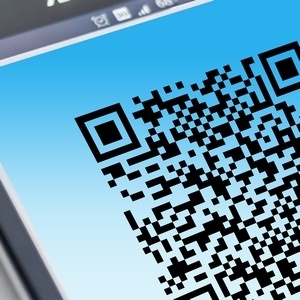QR Codes Re-emerge in the eCommerce World
 You have likely seen QR Codes before in advertisements, smartphone applications, and on product packaging. According to dictionary.com, a QR code, short for Quick Response, is a matrix bar code that is read by photographing it with the camera of a smartphone or other mobile device that is equipped with a barcode reader.
You have likely seen QR Codes before in advertisements, smartphone applications, and on product packaging. According to dictionary.com, a QR code, short for Quick Response, is a matrix bar code that is read by photographing it with the camera of a smartphone or other mobile device that is equipped with a barcode reader.
QR codes have been around for the last 25 years, but failed to translate to mainstream use in America. But that is about to change as countries such as China and India have chosen QR code-based mobile payment that has almost entirely displaced cash in those countries. As other nations work toward a cashless standard, QR codes have turned out to be an applicable technology as proven in Asia. According to Mobile Marketer, QR codes are gaining importance in America once again thanks to giant mainstream corporations like Walmart, Pepsi, Jeep, Snapchat, and Spotify, that are finding ways to put them to good use.
Why QR Codes Make Sense for eCommerce
For the eCommerce industry, the risk associated with taking payments are well known. eCommerce has long relied on the Card-Not-Present payment method , or CNP, that directs customers to make payments by manually entering their credit card number and security code and then clicking “Purchase” to buy the item of their choice. Merchants then store all this information on their online systems which is usually susceptible to data breaches.
But the emergence of QR Codes for payments improve the purchasing experience for both merchants and consumers. Essentially, QR codes allow a consumer to make a purchase without the merchant having access to the consumer’s sensitive information. This allows for a more secure transaction and a quicker, simplified eCommerce payment process. With QR Codes, a consumer can easily hold up their mobile device to a computer screen and read the QR code with a payment application on the device to initiate the payment. There is no need to enter credit card numbers, expiration dates, or security codes and this increases security when making payments. It is also much faster than manually keying in payment information.
Types of QR Codes in the Payments Industry
According to pymnts.com, in August 2017, EMVCO, the global technical body that manages EMV specifications, released two QR code payment specifications – one for consumer-presented QR codes and one for merchant-presented QR codes. These specifications can be found on EMVCO’s website for royalty-free use.
- Consumer-presented QR code: A customer displays a QR code on their mobile device and then the merchant uses an optical scanner to read the QR code.
- Merchant-presented QR code: A merchant displays a QR code on their POS system and then the customer uses their mobile device to scan the QR code.
Mobile Payments Today says that all Walmart stores nationwide currently use merchant-presented QR codes. Consumers scan the QR code displayed on the Walmart checkout screen with their mobile devices and this allows them to pay for their goods with the payment method stored within their Walmart Pay application.
With the current push towards mobile payments and mainstream companies starting to adopt this technology, it may just be a matter of time before QR codes are readily used for eCommerce purchases in the United States.
Learn More About QR Code Payment Acceptance:
Contact us online or call 1-800-621-8931.
Subscribe to Card Talk
Our monthly newsletter delivers the latest payments news straight to your inbox


